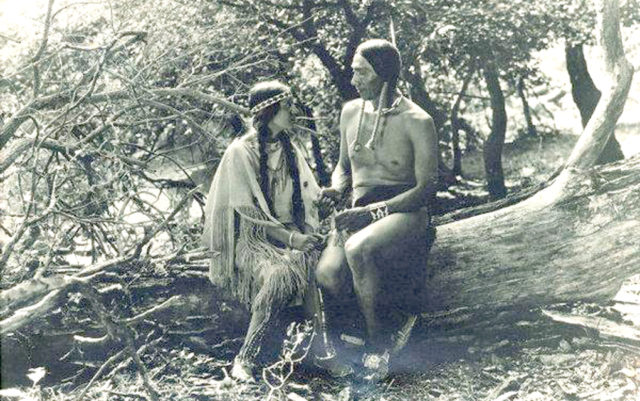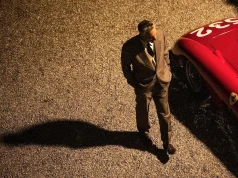
French critic cum filmmaker Jacques Rivette asserted that, “Every film is a documentary of its own making.” While this is true of all movies, it is especially true of early cinema. The films documented people, places and cultures now gone, making the exposed film as valuable as the artifacts left behind. Though we may never be able to experience these moments or visit these locales again, we have the movies. We can watch them, we can learn from them and we can preserve them for future generations.
That is the case with Daughter of Dawn, a silent film from 1920 made with an entirely Native American cast. Shot on a reservation in southwest Oklahoma, Daughter of Dawn features a cast of 300 Kiowias and Comanche, all providing their own costumes, tepees and horses.
Daughter of Dawn concerns the love triangle between Dawn (Esther LeBarre) and her two Kiowa suitors: White Parker (White Eagle) and Black Wolf (Jack Sankadota). To win Dawn’s heart, they must prove their bravery by cliff jumping. One balks, losing Dawn in the process, and defects, selling out his tribe to the neighboring Comanche.
But plot and story are secondary to Daughter of Dawn’s significance, namely the movie’s documentary aspect. Prior to filming the movie, co-writer and producer Richard Banks spent more than 25 years living with various tribes, and it shows. Daughter of Dawn has an undeniable authenticity both in its cinematography and performances, even if that authenticity doesn’t yield captivating dramatics. Scenes are shot from behind the proscenium arch with the players entering and exiting as they might on stage. LeBarre, Eagle and Sankadota all exude the typical stiffness of amateurs, and director Norbert Myles models his actors by posing them as needed, a technique that works remarkably well. There is no sense that any of these performers or filmmakers are putting on airs. They are simply repositioning life to record it.
This effect — shot in black-and-white and tinted gold for day, blue for night — provides an image not often seen in most Western-set movies. Myles and Banks focus strictly on the two tribes and capture a romanticized look at Native American life, culture and ritual.
But if not for blind luck and fortune, all of this would have been lost to time as Daughter of Dawn only played twice upon its release — once in Los Angeles on Oct. 17, 1920 and once more in Kansas the following year. The film was shelved for unknown reasons and disappeared until 2005, when a North Carolina private investigator received the print as payment. Why the investigator was paid with a movie and how the client came to possess this pristine print is unknown. What we do know is that Daughter of Dawn ended up in the rights hands, with the investigator selling the print to the Oklahoma Historical Society.
It has since been restored and making the theatrical rounds. No known orchestral score for Daughter of Dawn exists, prompting the Mont Alto Motion Picture Orchestra to compose an original score for the Colorado premiere at Chautauqua on Aug. 3.
On the Bill: Daughter of Dawn. 7:30 p.m. Wednesday, Aug. 3, Chautauqua Auditorium, 900 Baseline Road, Boulder, 303-442-3282, chautauqua.com.














